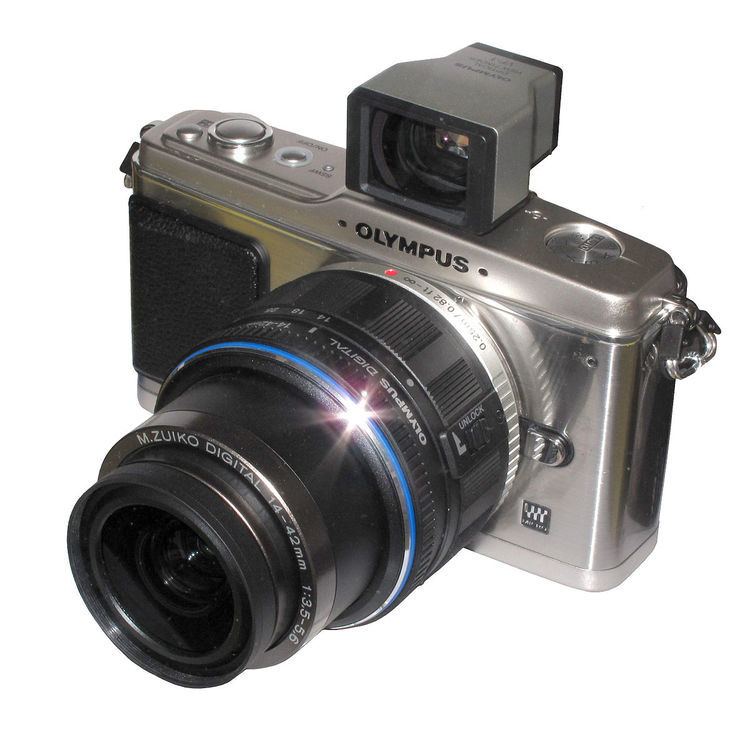Storage Secure Digital card | ||
 | ||
Type Micro Four Thirds, interchangeable lens camera Lens Micro Four Thirds System mount Maximum resolution 4032×3024 (12.3 megapixels) Focus modes Single, continuous, manual | ||
The Olympus Pen E-P1 announced on 16 June 2009 is Olympus Corporation's first camera that adheres to the Micro Four Thirds (MFT) system design standard. The first camera to use the Micro Four Thirds mount was Panasonic's G-1 camera.
Contents
Features
The design of the camera is reminiscent of the Olympus Pen half frame film cameras and is marketed as the Olympus digital PEN. The model presented on 16 June 2009 was very similar in looks to the Olympus Pen F. Initially, two micro 4/3 lenses were available from Olympus, one 14–42 mm f/3.5–5.6 zoom and a 17 mm f/2.8 pancake prime lens. Remarkably, with the exception of the optical viewfinder, the E-P1 seemed to fit most of the features found on the Olympus E-620, a larger Four Thirds system DSLR, into the small, compact MFT form factor.
In addition to Micro Four Thirds lenses, Olympus offers adapters allowing the use of Four Thirds lenses, or OM Zuiko lenses originally manufactured for use on the classic OM series of film SLR cameras that Olympus was famed for years ago.
The E-P1 does not have a built-in optical or electronic viewfinder, but instead uses the large 3-inch (76 mm) inch color "HyperCrystal" LCD on the back of the camera. The fixed LCD panel with anti-reflective coating presents a 100% live preview of the image as seen by the sensor. Olympus did offer an optional accessory hotshoe mounted optical viewfinder, the VF-1, that provided for a 17 mm lens angle of view
The E-P1 auto focuses using contrast-detection.
Other features include 720P30 video recording with the ability to process the video in camera with different effects.
In an interview, Mr Akira Watanabe, SLR Planning Department Manager for Olympus Imaging, said that for a number of reasons Micro Four Thirds was developed to meet the demands of those who wanted a DSLR, but without the size problems that come with one.
The 17 mm f/2.8 pancake lens or the 14–42 mm f/3.5–5.6 zoom lens are of the Micro Four Thirds lens mount which means they are smaller than Four Thirds lenses which require an adapter to fit the Micro Four Thirds body.
Several third-party manufacturers offer adapters for lenses of virtually all single-lens reflex and rangefinder systems, plus some cinema lenses.
Successor models
The E-P1 was replaced by the Olympus Pen E-P2 which was announced in November 2009. The third model in the Pen line, the Olympus Pen E-P3, was announced in June 2011.
